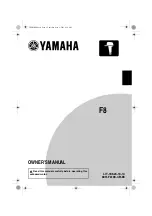5
http://www.national.com
The FFT assumes the waveform being evaluated is repetitive and
that it extends from -
∞
to +
∞
in time. In order to make the evaluated
signal appear as though it extends from -
∞
to +
∞
, FFT algorithms
fold the signal such that the last point in the data record is followed
by the first point. To the extent that this is true, there will be no
discontinuities in the folded waveform.
However, folded waveforms often have a discontinuity and this
leads to erroneous dynamic performance measurements. This is
shown in
Figure 5
, where we see poor, inaccurate dynamic
performance measurements at the upper right corner, as well as a
spreading around the input frequency. This spreading is called
"leakage".
Figure 5. A discontinuity in the folded finite-time
waveform leads to misleading results in the FFT.
There are many windowing techniques in use today to minimize this
problem.
Figure 6
shows an FFT plot of the same data used in
Figure 5
, but using the Hanning windowing function. Note the
improved dynamic performance over no windowing as in
Figure 5
.
The Flat-Top windowing function even yields similar dynamic
performance measurements, as can be seen in
Figure 7
. Compare
the dynamic performance parameters of
Figures 6 and 7
with those
of coherent sampling (
Figure 4
).
Figure 6. Windowing will reduce the effects of
waveform folding. The Hanning windowing function is
used here.
Figure 7. The Flat-Top windowing function yields
slightly improved dynamic performance
measurements over the Hanning function.
Содержание ADC10040
Страница 7: ...7 http www national com ...
















